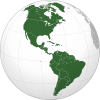
The country of Brazil occupies roughly half of South America, bordering the Atlantic Ocean. Brazil covers a total area of 8,514,215 km2 (3,287,357 sq mi) which includes 8,456,510 km2 (3,265,080 sq mi) of land and 55,455 km2 (21,411 sq mi) of water. The highest point in Brazil is Pico da Neblina at 2,994 m (9,823 ft). Brazil is bordered by the countries of Argentina, Bolivia, Colombia, Guyana, Paraguay, Peru, Suriname, Uruguay, Venezuela, and French Guiana.

The federative units of Brazil are subnational entities with a certain degree of autonomy and endowed with their own government and constitution, which together form the Federative Republic of Brazil. There are 26 states and one federal district. The states are generally based on historical, conventional borders which have developed over time. The states are divided into municipalities, while the Federal District assumes the competences of both a state and a municipality.

Amazonas is a state of Brazil, located in the North Region in the north-western corner of the country. It is the largest Brazilian state by area and the ninth-largest country subdivision in the world. It is the largest country subdivision in South America, being greater than the areas of Chile, Paraguay, and Uruguay combined. Neighbouring states are Roraima, Pará, Mato Grosso, Rondônia, and Acre. It also borders the nations of Peru, Colombia and Venezuela. This includes the Departments of Amazonas, Vaupés and Guainía in Colombia, as well as the Amazonas state in Venezuela, and the Loreto Region in Peru.

Mato Grosso is one of the states of Brazil, the third largest by area, located in the Central-West region. The state has 1.66% of the Brazilian population and is responsible for 1.9% of the Brazilian GDP.
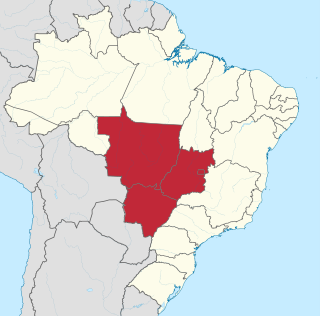
The Central-West or Center-West Region of Brazil is composed of the states of Goiás, Mato Grosso and Mato Grosso do Sul; along with Distrito Federal, where Brazil's national capital, Brasília, is situated. The region comprises 18.86% of the national territory, and is the least populated in Brazil.
São Félix can refer to the following places:

The Araguaia River is one of the major rivers of Brazil, and a tributary of the Tocantins River.

UTC−03:00 is an identifier for a time offset from UTC of −03:00.
The Xingu Indigenous Park is an indigenous territory of Brazil, first created in 1961 as a national park in the state of Mato Grosso, Brazil. Its official purposes are to protect the environment and the several nations of Xingu Indigenous peoples in the area.
The Trumai are an indigenous people of Brazil. They currently reside within the Xingu Indigenous Park, in the state of Mato Grosso. They have a population of 258 in 2014. They were 97 in 2011 and 120 in 2006, up from a low of 26 in 1966.
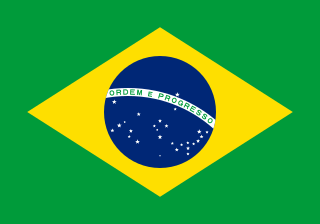
The following outline is provided as an overview of and topical guide to Brazil:
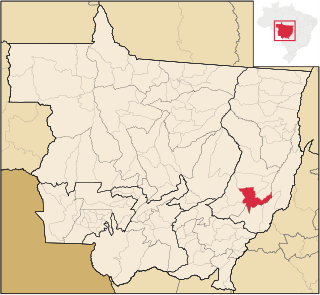
Nova Xavantina is a municipality in the state of Mato Grosso in the Central-West Region of Brazil.
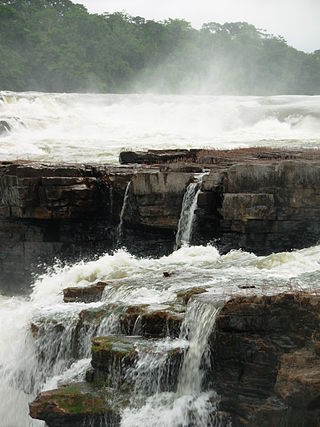
Juruena National Park, declared in 2006, is the third largest national park of Brazil. It is located along the Juruena River, in the north of Mato Grosso state and the south of Amazonas state. It forms part of a corridor of protected areas that is meant to contain agricultural expansion into the Amazon rainforest.
Daylight saving time in the Americas is the arrangement in the Americas by which clocks are advanced by one hour in spring and moved back in autumn, to make the most of seasonal daylight. The practice is widespread in North America, with most of Canada and the United States participating, but much less so in Central and South America.

Portugal has two time zones and observes daylight saving time. Continental Portugal and Madeira use UTC+00:00, while the Azores use UTC–01:00. Daylight saving time is observed nationwide from the last Sunday in March to the last Sunday in October, when continental Portugal and Madeira advance one hour to UTC+01:00, and the Azores advances one hour to UTC+00:00.
The Rio Roosevelt Ecological Station is an ecological station in the state of Mato Grosso, Brazil.

The Mato Grosso tropical dry forests (NT0140), also called the Mato Grosso seasonal forests, is an ecoregion in central Brazil to the south of the Amazon region. It contains vegetation in the transition between the Amazon rainforest to the north and the cerrado savanna to the south. The opening of highways through the region has caused rapid population growth, deforestation and pollution.

The 2010 Acre referendum consisted of a decision regarding maintaining the time zone change for the Brazilian state of Acre, as the state had an 1-hour difference from Brasília Time (UTC-03:00) in 2008, when the original time zone had minus 2 hours from Brasília.
General elections will be held in Brazil on 4 October 2026 to elect the president, vice president, members of the National Congress, the governors, vice governors, and legislative assemblies of all federative units, and the district council of Fernando de Noronha. If no candidate for president or governor receives a majority of the valid votes in the first round, a runoff election is held on 25 October.
Proposals for the creation of federative units in Brazil are currently under discussion and in different stages of processing in the National Congress. The creation of 18 new states and three new federal territories were officially proposed, which would bring the total number of federative units to 48. The region with the largest number of federative units would be the North region, while the South region would be the only one with a new federative unit. The states with the most advanced stage of creation are Gurgueia and Maranhão do Sul both in the Northeast region.














